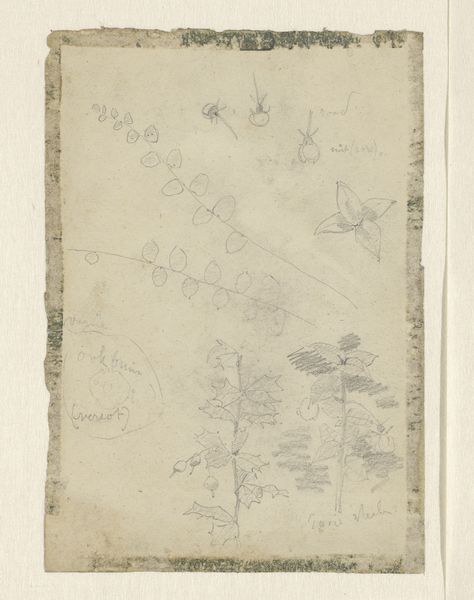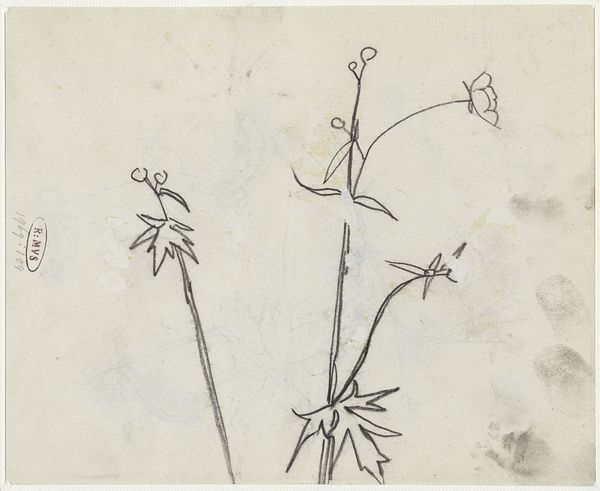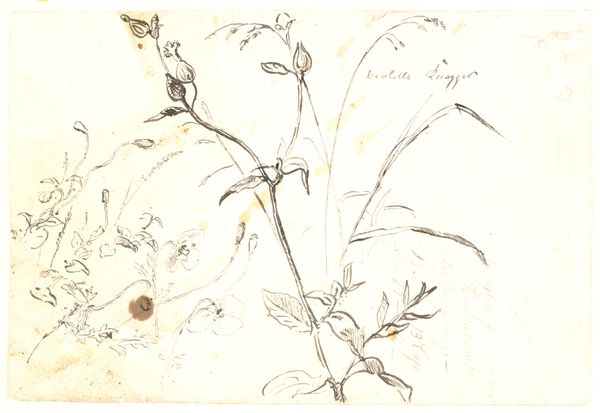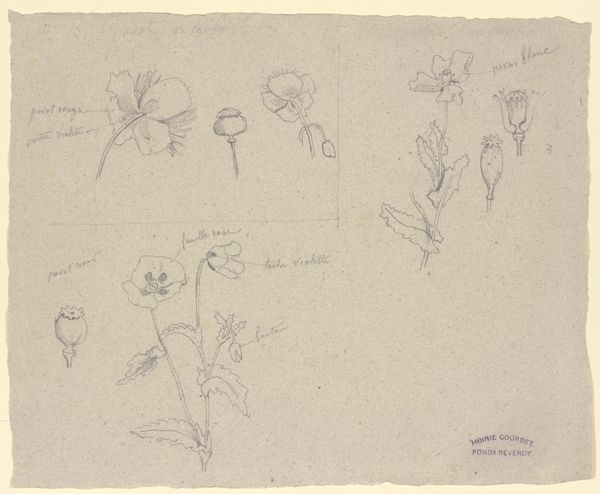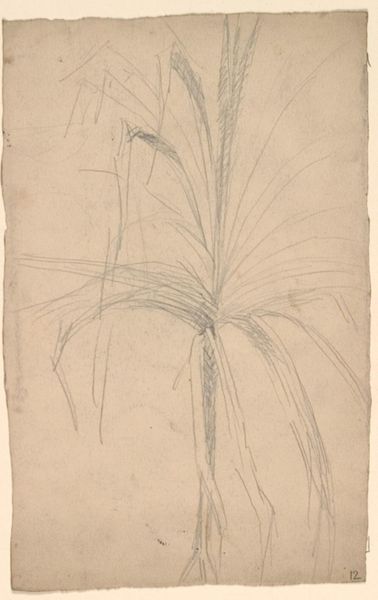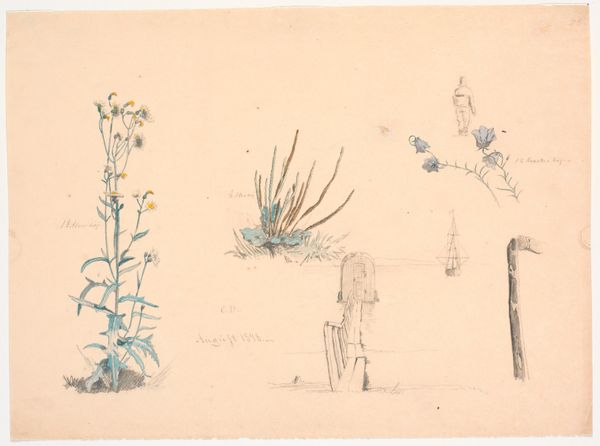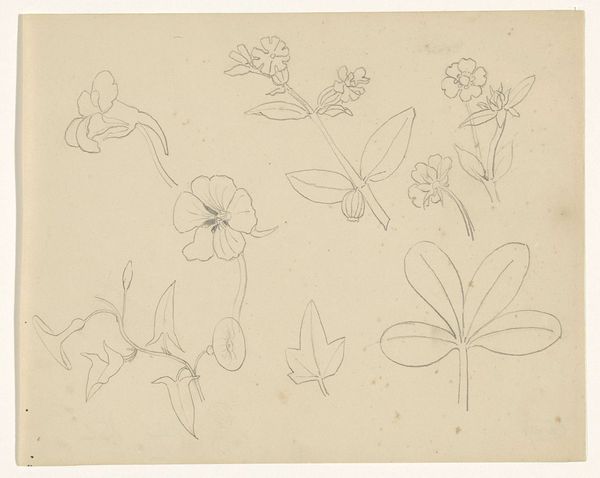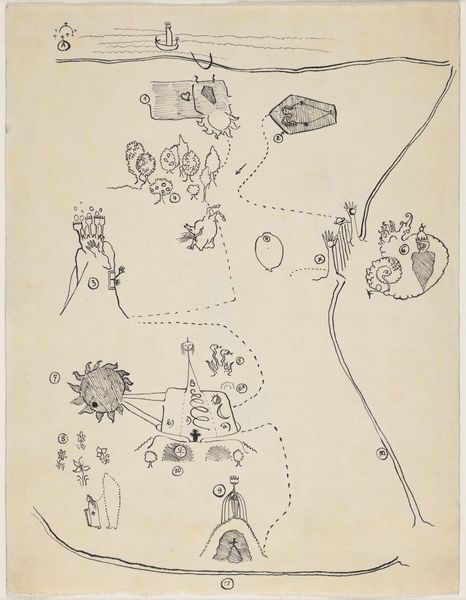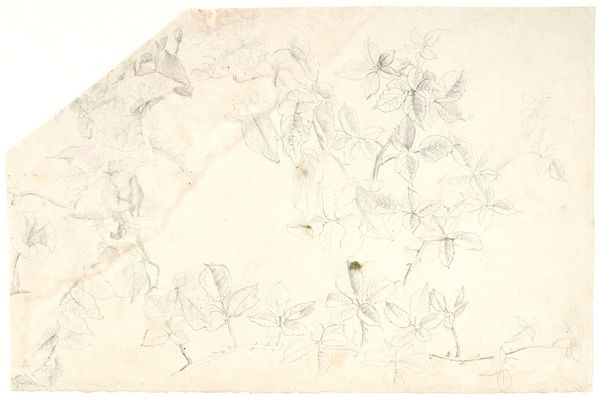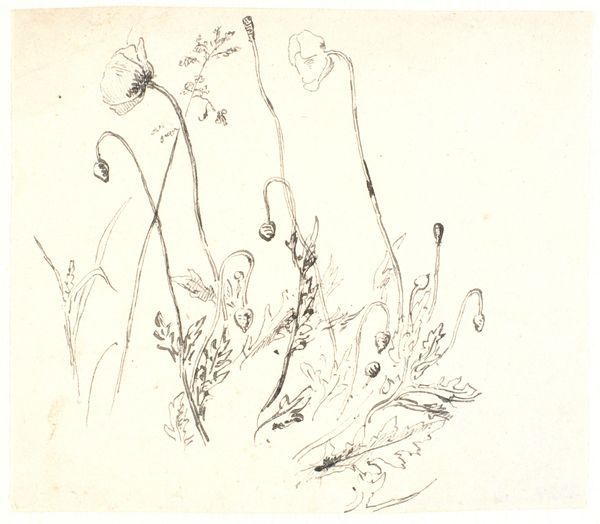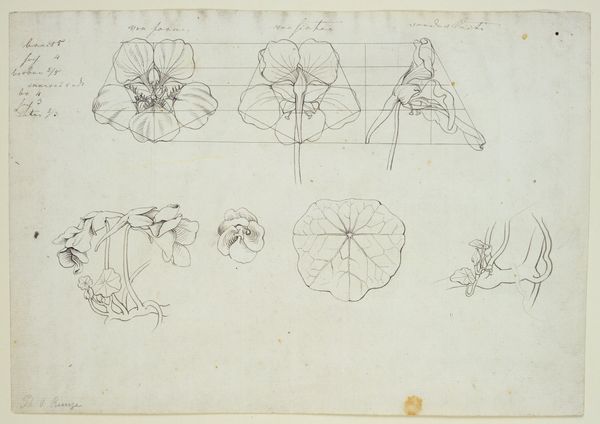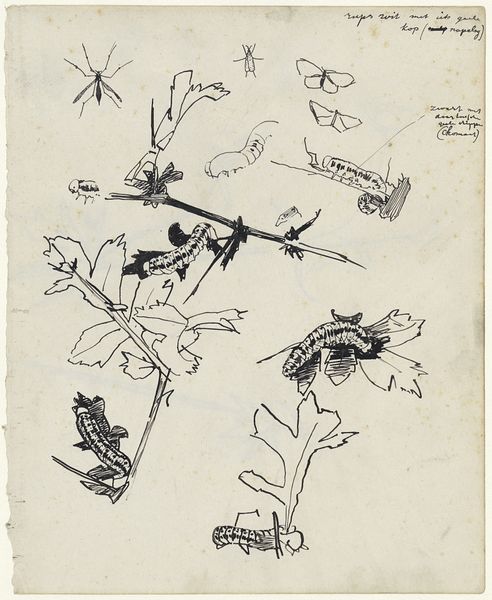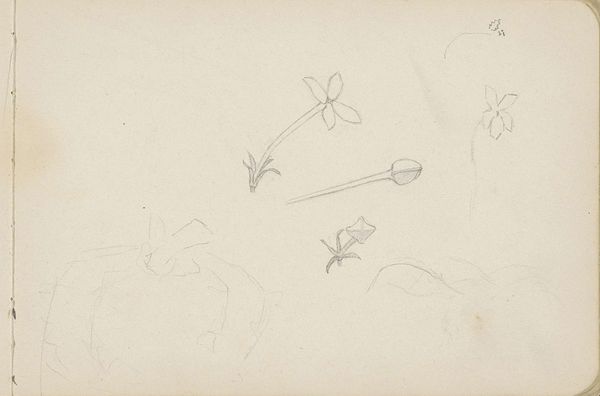
Dimensions: height 218 mm, width 287 mm
Copyright: Rijks Museum: Open Domain
Curator: Today we're looking at Gerrit Willem Dijsselhof’s "Waterplanten met een vis, met kleurnotities," which translates to "Water Plants with a Fish, with Color Notes." It's thought to have been made sometime between 1876 and 1924 and is part of the Rijksmuseum's collection. It's a drawing done with pencil and pen on paper. Editor: Oh, it’s got that instant sketchbook feel, right? All breezy lines and jotted-down thoughts. It reminds me of something I’d scribble by a pond on a hot afternoon, a kind of botanical daydream. Curator: Indeed. These sketches offer an intimate glimpse into the artist’s process, revealing his interest in capturing the nuances of the natural world. I find the use of pencil alongside pen to be interesting; it almost highlights a dialogue between intention and spontaneity. Editor: Exactly. The plant studies – these whimsical, almost Seussian renditions – are captivating. But that little fish, half-formed, hiding among the reeds... there's a story hinted at. Did he just glimpse it, I wonder? It also raises questions about humans´impact. Curator: That partially-formed fish speaks to a larger commentary on environmental exploitation, perhaps hinting at our incomplete understanding of the ecosystems we are rapidly changing, or indeed a personal relationship with fishing and the impact that had. What looks like casual observation, becomes a politically charged commentary. Editor: Perhaps so. Or, you know, maybe he was just a bit rubbish at drawing fish that day! Honestly, for me, this piece sparks this warm nostalgia; a simple afternoon beside some idyllic waterway. And in a strange way the imperfections are the best part; I can almost feel Dijsselhof right here with me. Curator: But let’s remember the socio-political lens, this resonates so profoundly within broader historical narratives regarding conservation and social responsibility in a period where these discussions began finding expression through art. Editor: Well, for me it highlights how the best sketches are like little time capsules – they trap a mood, a moment, a flicker of inspiration. And this one? I'm grateful it washed up on the shores of the Rijksmuseum. Curator: Agreed. Viewing art like this encourages us to find relevance within history to address pressing issues that affect people´s lives even today.
Comments
No comments
Be the first to comment and join the conversation on the ultimate creative platform.
